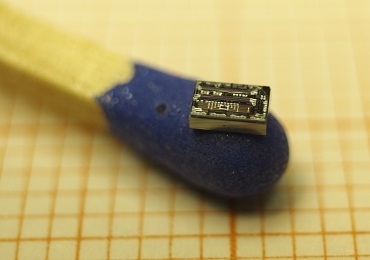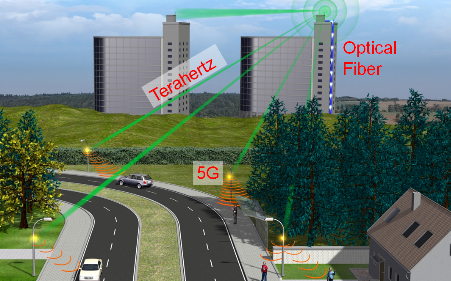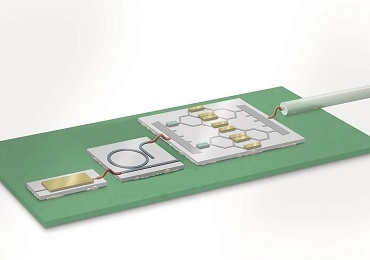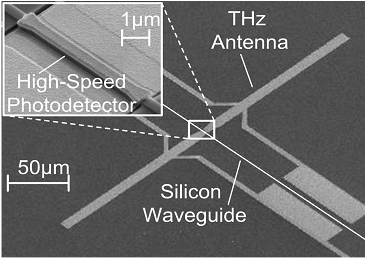
Photonic integrated circuits (PIC) enable the integration of complex optical systems on a very small footprint. Especially silicon photonics allows for a high-density integration and thus completely new, energy-efficient system concepts can be realized.

The goal of this interdisciplinary research group is to develop photonic sensor systems for applications in chemistry, biology, and the life-sciences.

The Teratronic Signal Processing Group specializes in pushing the bandwidth limitations of on-chip signal processing into the THz regime by merging advanced electronics, photonics and digital signal processing technologies.

The Optical Communications Group aims at high-speed data transmission (100 Gbit/s to several Tbit/s) exploiting novel system concepts and components. The advancement of digital signal processing (DSP) algorithms towards increased functionality and performance at reduced complexity is an integral part of that work. Current research includes multi-carrier communication systems based on optical frequency combs, coherent transceiver optimization by digital signal processing, Kramers-Kronig reception for data center interconnects, passive optical networks and high-capacity free-space transmission systems.

Photonic wire bonds fabricated by 3D lithography enable the seamless combination of various photonic integration platforms, for e.g., to realize high-speed energy-efficient transceivers.

Nanophotonics employs fundamental opto-electronic principles of light-matter interaction to implement novel functionalities on chip scale at lowest footprint, lowest energy consumption and highest operating speed.
